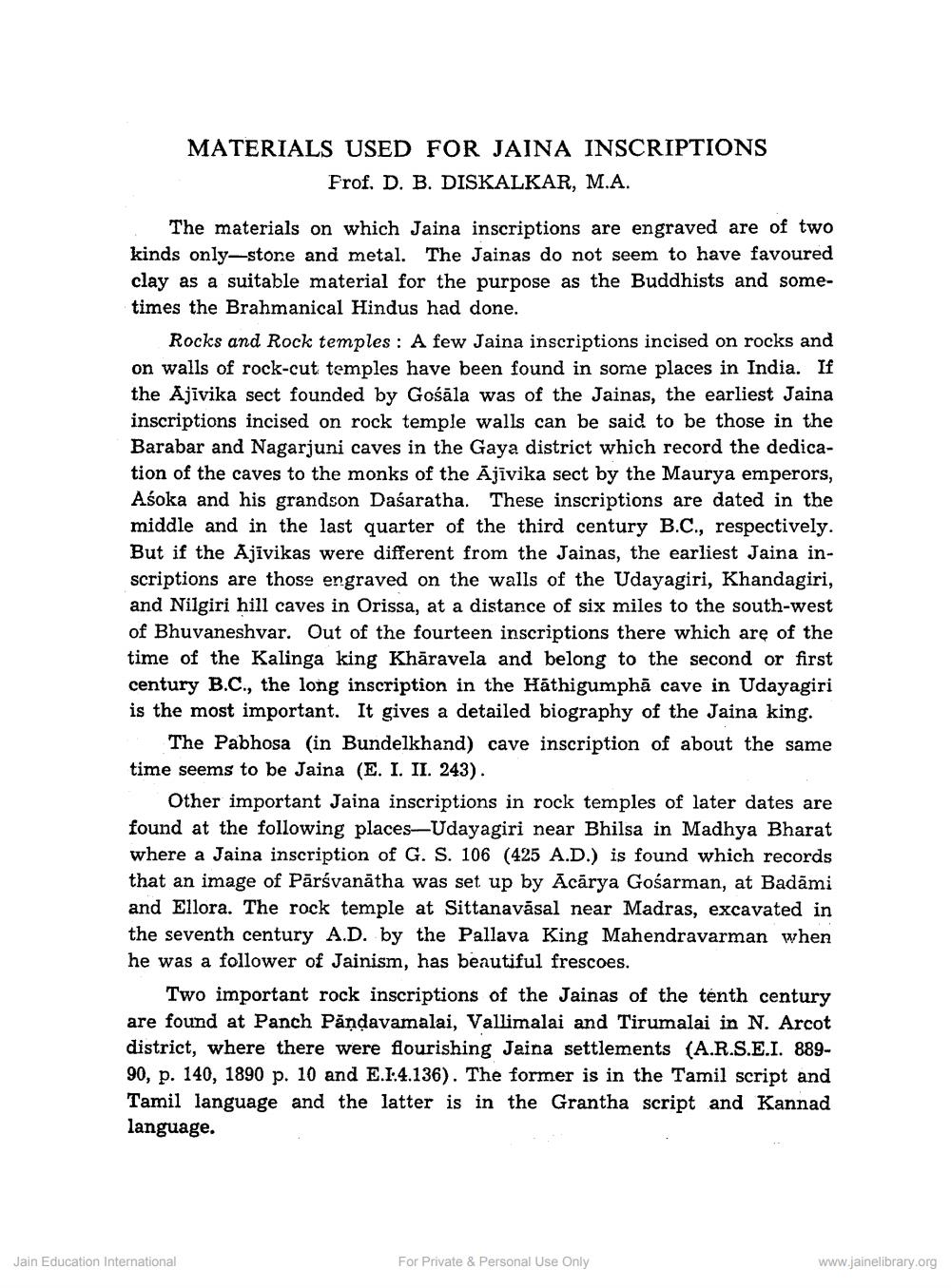________________
MATERIALS USED FOR JAINA INSCRIPTIONS
Prof. D. B. DISKALKAR, M.A.
The materials on which Jaina inscriptions are engraved are of two kinds only-store and metal. The Jainas do not seem to have favoured clay as a suitable material for the purpose as the Buddhists and sometimes the Brahmanical Hindus had done.
Rocks and Rock temples : A few Jaina inscriptions incised on rocks and on walls of rock-cut temples have been found in some places in India. If the Ajīvika sect founded by Gośāla was of the Jainas, the earliest Jaina inscriptions incised on rock temple walls can be said to be those in the Barabar and Nagarjuni caves in the Gaya district which record the dedication of the caves to the monks of the Ajīvika sect by the Maurya emperors, Aśoka and his grandson Dasaratha. These inscriptions are dated in the middle and in the last quarter of the third century B.C., respectively. But if the Ajīvikas were different from the Jainas, the earliest Jaina inscriptions are those engraved on the walls of the Udayagiri, Khandagiri, and Nilgiri hill caves in Orissa, at a distance of six miles to the south-west of Bhuvaneshvar. Out of the fourteen inscriptions there which are of the time of the Kalinga king Khāravela and belong to the second or first century B.C., the long inscription in the Häthigumphā cave in Udayagiri is the most important. It gives a detailed biography of the Jaina king.
The Pabhosa (in Bundelkhand) cave inscription of about the same time seems to be Jaina (E. I. II. 243).
Other important Jaina inscriptions in rock temples of later dates are found at the following places-Udayagiri near Bhilsa in Madhya Bharat where a Jaina inscription of G. S. 106 (425 A.D.) is found which records that an image of Pārsvanātha was set up by Acārya Gośarman, at Badāmi and Ellora. The rock temple at Sittanavāsal near Madras, excavated in the seventh century A.D. by the Pallava King Mahendravarman when he was a follower of Jainism, has beautiful frescoes.
Two important rock inscriptions of the Jainas of the tenth century are found at Panch Păņdavamalai, Vallimalai and Tirumalai in N. Arcot district, where there were flourishing Jaina settlements (A.R.S.E.I. 88990, p. 140, 1890 p. 10 and E.1.4.136). The former is in the Tamil script and Tamil language and the latter is in the Grantha script and Kannad language.
Jain Education International
For Private & Personal Use Only
www.jainelibrary.org




